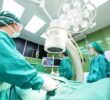Asian vs. Western Plastic Surgery
- July 4, 2018

Cosmetic surgery has been on the rise among Asians living both at home and abroad – and with it, plastic surgeons have identified unique concerns among Asian populations when it comes to these procedures.
This blog post intends to compare and contrast different styles of plastic surgery, and how Asian and Western treatment plans differ in the world of cosmetic surgery. Disclaimer: this post should not be taken as medical advice in any way. If you have any questions or concerns, please contact your healthcare provider.
Asian patients want to preserve their ethnic identity.
Although some doctors express concerns that Asian patients are wanting to become more Westernized in appearance, many Asian patients come into plastic surgery hoping to refine their Asian features, rather than redefining them as Western ones. Many patients say they do not intend to “look white” after they undergo surgery, but rather, to look like a younger and better version of themselves – much like any patient of any other ethnic background might want.
In the United States and Asia, a “Look East” movement has begun among cosmetic surgeons and their patients to help preserve their unique ethnic features when going under the knife. Now, some surgeons are making subtler changes to their patients’ noses and eyes in particular, in order to help maintain physical traits associated with the Asian identity and combat the spread of Western beauty ideals overseas.
Asian patients have different anatomical features.
One reason why Asian patients may be drawn to cosmetic surgery is the presence of a monolid, or an eyelid with no upper eye crease. About 50% of people of Asian descent have no upper eye crease, and some will go on to fix this issue using cosmetic surgery. Within that category, however, lie even more subtle differences in the anatomical structure of the eyelid, depending on whether the patient descends from China, Japan, Korea, South Asia or elsewhere.
Asian patients clearly have different anatomy than Western ones, leading surgical techniques to differ among the Asian population. Surgeons may follow either an open or closed crease formation technique, depending on the anatomical structure of the patient’s eye. This surgery is one of the most popular among Asian patients, with surgeons performing as many as five eyelid surgeries per day in some Eastern nations.
Asian patients may be at higher risk for postoperative complications.
Certain postoperative complications may be more common in Asian populations than Caucasian ones. For example, Asian patients may suffer from prolonged swelling and scarring following cosmetic surgery. This is why using a surgeon that is well versed with Asian procedures is important, such as Dr Ellis Choy.
The use of silicone implants, which may be more popular in Asia, is also associated with certain risks. Many patients find themselves sick following breast augmentation with silicone implants, with symptoms including nausea, joint pain and chronic fatigue. This syndrome, known as autoimmune syndrome induced by adjuvants (ASIA), explains why silicone breast implants sometimes cause unexplained illness in postoperative patients.







